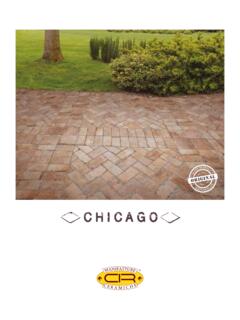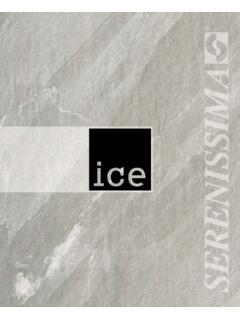Transcription of The rise and decline of the Serenissima A strategy game by ...
1 The rise and decline of the Serenissima A strategy game by Marco maggi & francesco nepitello 2. INTRODUCTION Venice starts the game in its Rise, and the game ends when the Struggle epoch is completed. In Venetia, 2 to 4 players compete to become the most Players score Victory Points (VPs) at the end of every prosperous and influential noble family in the history of epoch. the Serenissima Republic. The player with the highest VP score at the end of the From its rise in the ninth century to its decline and game wins! fall in the eighteenth, players take part in the golden age that built the city that once was the Queen of the Components list Mediterranean.
2 The standard rules require the following components: Your aim in the game - 1 game board Each player controls a patrician household of Venice, vying for power against other influential families. To gain clout - 7 Action dice and fortune (Victory Points), families extend - 160 Influence tokens, in 4 colours their influence outside the city, sending representatives to foreign markets. - 32 Podest tokens, in 4 colours As their authority spreads, the power - 24 Family cards, 6 for each family of Venice increases accordingly, and - 45 Action cards distant towns and ports fall under - 20 Threat cards the sway of the Serenissima .
3 At the same time, players compete - 10 Battle tiles inside the city for the coveted - 18 VP tokens (Victory Points). title of Doge, the head of the government, spending Ducats to - 18 Doge tokens gain popularity. - 12 Venice Control/Enemy fleet tokens Many threats - 42 Kingdom tokens (shields). But the hegemony of Venice over the Mediterranean is threatened by many enemies. - 1 Infamy marker The Republic faces the rise of competing powers, such as - 1 Venetia marker the rival seafaring Republic of Genoa and the Kingdom of Aragon to the west, or the Byzantine Empire and then the - 1 Enemy Powers markers Ottoman Turks to the east.
4 - 3 Epoch markers, 1 for each Epoch Century after century, players will take part in the struggle that will see the rise and fall of the Republic of Venice. The set of optional rules found at page xx require the following additional components: Rewrite history The game is played across three epochs: Rise, Apogee and Struggle. A Power track on the board is used to trigger - 60 Ducat tokens, in 4 colours the passage of the various epochs, and an Epoch box and - 24 Monument tokens, in 4 colours marker are used to keep track of the current epoch.
5 - 7 Voting tiles 3. STANDARD RULES Influence tokens Each player gets 40 Influence tokens (wooden cubes) in the selected colour. Most games of Venetia should be played using the rules presented in this chapter. Players place Influence tokens in sea areas and colonies on the board, competing with Players looking for a higher level of historical accuracy and other players for predominance. strategy may consider the addition of the optional rules presented at page xx. Podest tokens Players receive 8 Podest tokens apiece STANDARD COMPONENTS (wood pawns), representing the city officials who govern a colony in the When using the standard rules, players do not make use of name of the Serenissima .
6 A number of components (Ducat and Monument tokens, and Sestiere tiles) and do not take into account the names Podest tokens are placed on the board to mark when a of the districts of the city of Venice (Sestieri) shown on the player has gained control over a colony. board around the city diagram. Action dice Players' materials The game uses seven custom dice, divided in three sets by At the start of a game, each player chooses a colour (among colour. The colour indicates the type of action that a die white, red, blue and yellow) and takes all the components allows a player to undertake: military (silver), political related to that colour.
7 (bronze) and commercial (gold). Each die offers the same set of icons, regardless of its colour: Family cards Family cards are used by players to select their candidate for the title of Doge when new elections occur. The dice are rolled to generate the Action die pool, a set of die results that are used by players to take actions. At the start of his turn, each player selects one die result among those available. Action cards White player: Red player: There are 45 Action cards in the Dandolo the Gradenigo the game. Each card describes a powerful special opportunity of play inspired by historical events, and shows a number of Ducats, to be used for the elections of a new Doge.
8 Players draw cards when a die result showing a card icon is selected. Cards that have been used or discarded are placed Yellow player: Blue player: to form a discard pile. If the Action deck is ever exhausted, the Morosini the Venier shuffle the discard pile to form a new deck. 4. Threat cards The game board Threat cards introduce events The gameboard depicts the Mediterranean Sea and its capable of changing the political, coasts - the focus of the expansion of the Serenissima economical and military Republic along its history. landscape of the Mediterranean.
9 The map is divided in ten regions and eight sea areas. (a section at the end of this booklet illustrates the historical circumstances Regions introduced by each card - see page xx). Regions are identified by a distinctive colour and name Players draw cards from the Threat deck at designated (the numbers are keys to the board image at the bottom of moments - whenever the Action die pool is exhausted, and the page). when a player taking a military action triggers a Casus belli Ponente (a), Tirreno (b), Italia (c), Dalmatia (d), Grecia - an incident that provokes the reaction of enemy powers.
10 (e), Romania (f ), Arcipelago (g), Tartaria (h), Levante (i), Africa (l). Battle tiles Battles in Venetia are resolved using Every region contains three minor colonies and one major a set of ten Battle tiles. These large colony (smaller circles inscribed with a 3' and bigger cardboard tiles are kept aside until circles with a 4', respectively). needed, and must be shuffled each A small shield box is placed beside each region's name, and time they are used. will be used to hold a Kingdom token should it enter play. VP tokens Finally, one or more dots are placed on top of each region's Players gain VP tokens by removing name - this is the value of a Victory Points bonus awarded Enemy fleets and playing Action cards to players who have Influence tokens inside a major colony specifically instructing them to draw (see Scoring, page xx).









